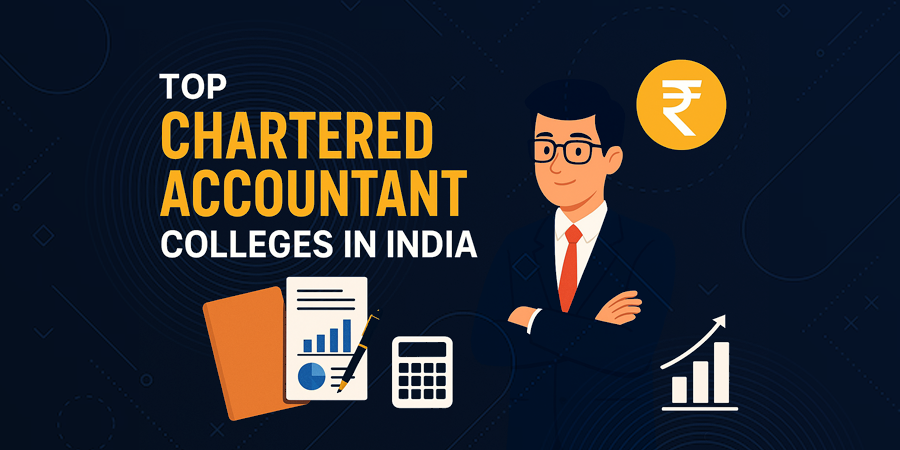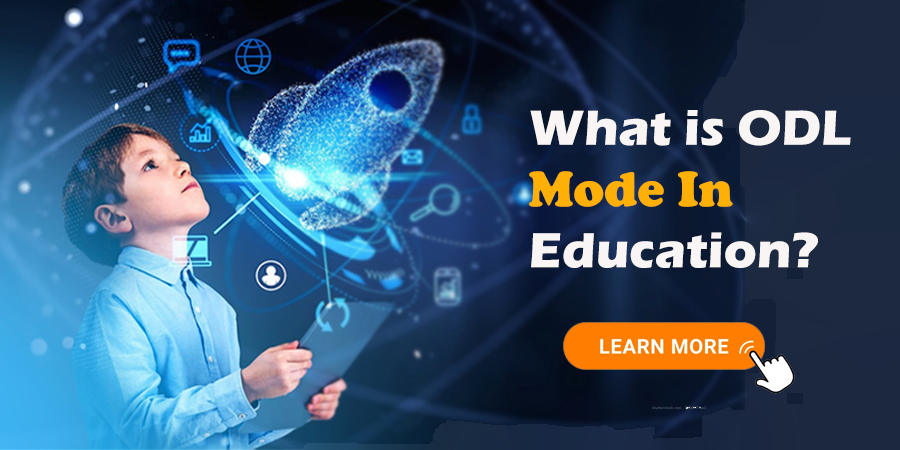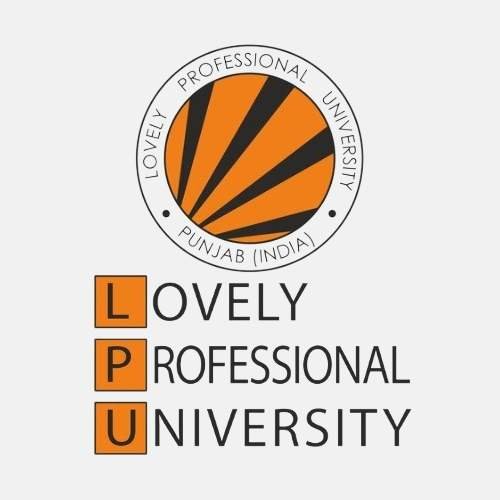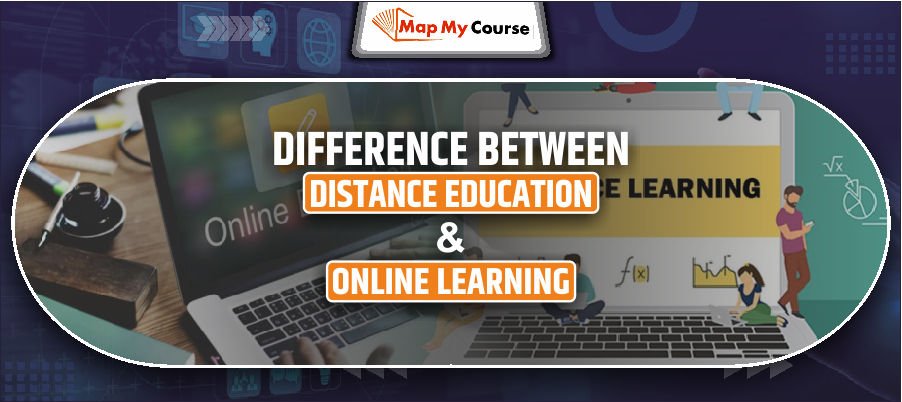Ravi always wanted to continue his studies further, but with his job and family, going to a regular college seemed impossible. But he got to know about two flexible study options: Distance Education and Online Learning.
At first, he thought they were the same – study from home, whenever you want. But the more he thought about it, the more confused he got. “What’s the real difference? Which one should I choose?”
If you’re like Ravi, you might be feeling the same way. Both Distance Education and Online Learning let you study on your own time and from the comfort of your home, but they’re not the same. Understanding the difference can help you pick the one that works best for you.
In this blog, we’ll explain the Major Difference Between Distance Education and Online Learning and help you figure out which option is right for you.
About Distance Education
Distance education, also known as correspondence Study, is a mode of learning where you don’t need to be in a classroom. Instead, you get all your study materials through email or post.
This type of learning you require to study on your own, with little help from teachers. You will need to use the materials provided to complete your assignments, projects, and exams by the deadlines. Sometimes, you might need to go to a study center for exams or workshops, but most of the time, it’s all done independently.
Some programs mix distance learning with in-person classes or workshops, and these are called hybrid or blended courses.
About Online Learning
Online Learning is a way of studying that happens completely over the internet. Students can attend live classes, watch recorded lessons, and interact with their teachers and classmates online. It’s a flexible way of learning because you can study from anywhere with an internet connection.
Compared to Distance Education, online learning is much more interactive. In distance education, students mostly study on their own with minimal interaction. But in online learning, students can participate in live discussions, ask questions, and engage with teachers and peers. There are also many digital resources like videos, quizzes, and e-books to help students learn better.
Comparison Between Distance Education And Online Learning
Basic | Distance Education | Online Learning |
Classes | Offline | Online |
Exams | Offline | Online |
Cost | Low | Affordable |
Flexibility | Moderate | High |
Courses | Variety | Specific |
Interaction | Face-to-face but Limited interaction | Digitally but you can connect anytime |
Travel | Involved | Not Involved |
Accessibility | Limited | Flexible |
Schedule | Fixed | Variable |
Internet | Not Required | Required |
Lectures | Live | Live and Recorded |
Acceptance | Global | Global |
What Are The Major Differences Between Distance Education and Online Learning
1. Mode of Learning
- Distance Education: Classes are held offline; you receive study materials by post or email and learn on your own. There is very little interaction with teachers or classmates.
- Online Learning: Everything happens online. You attend live classes, watch recorded lessons, and interact with teachers and classmates through video calls or chat.
2. Interaction and Engagement
- Distance Education: You mostly study by yourself, and you don’t interact much with your teachers or peers except when you are in class.
- Online Learning: There is regular interaction with teachers and classmates. You can ask questions during live sessions, participate in discussions, and do group activities.
3. Flexibility
- Distance Education: You can study whenever you want, but there are set deadlines for assignments and exams.
- Online Learning: You also have flexible study hours, but you need to attend live classes at scheduled times and follow deadlines for assignments.
4. Learning Resources
- Distance Education: Learning materials mostly consist of books or printed notes, which you study on your own.
- Online Learning: You get access to videos, quizzes, e-books, and interactive lessons that make learning more interesting and easier to understand.
5. Cost and Accessibility
- Distance Education: Usually cheaper because it uses printed materials and doesn’t need much technology.
- Online Learning: This can be more expensive than distance learning but is affordable because it involves live classes and digital tools, but it provides a more interactive learning experience.
6. Support and Guidance
- Distance Education: Support is limited to emails or phone calls. You learn mostly on your own.
- Online Learning: You can interact with your teachers during live classes and ask for help anytime. You also get feedback more often.
7. Exam and Evaluation Methods
- Distance Education: Exams are held at fixed locations or study centers. Evaluation happens mainly through assignments or major exams.
- Online Learning: You are evaluated regularly with quizzes, assignments, and exams. This helps you track your progress and get feedback more often.
Benefits Of Distance Education And Online Education
Benefits of Distance Education
- Flexibility: Distance education allows you to study at your own pace, whenever it’s convenient for you. You don’t have to stick to a fixed schedule.
- Affordability: Distance education programs are usually more affordable than traditional in-person learning. There are fewer overhead costs since you don’t need to attend classes on campus.
- Accessibility: You can study from anywhere, which makes it ideal for people who live in remote areas or those with limited access to physical universities.
- Study at Your Own Pace: Since you don’t have set class times, you can complete your assignments and exams at your speed, which gives you more control over your learning.
- Ideal for Working Professionals: Distance education is great for people with busy jobs or other responsibilities, as it allows them to balance their work and study commitments.
- No Geographical Limitations: You don’t need to travel or relocate to attend classes, which makes it easier for students who cannot move away from home due to personal reasons.
Benefits of Online Learning
- Interactive and Engaging: Online learning offers live classes, discussions, and real-time interaction with instructors and fellow students, making it much more engaging than distance education.
- Access to Digital Resources: Students can access a wide variety of resources, such as videos, e-books, quizzes, and interactive lessons, that make learning more dynamic.
- Global Learning Opportunities: Online learning allows you to take courses from universities worldwide, providing you with access to global knowledge and diverse perspectives.
- Flexibility with Structure: You can study from anywhere, but there is still structure through scheduled live classes, assignments, and deadlines, which helps keep students on track.
- Regular Feedback: Since online learning is interactive, students get regular feedback on their assignments, quizzes, and participation, which helps improve their performance.
- Better Collaboration: Online learning allows for virtual group projects, discussion forums, and peer collaboration, creating a sense of community despite being physically apart.
- Personalized Learning: Many online platforms allow you to go back and review lectures, access additional resources, or take extra practice tests, giving you a chance to learn at your own pace.
How To Choose the Right Distance And Online University?
- Accreditation and Recognition: Make sure the university is accredited by a recognized body (like UGC or AICTE in India). This ensures that the degree you earn is valid and recognized by employers.
- Check Course Offerings: Look at the programs they offer and ensure they match your career goals. Some universities specialize in specific areas, like business, healthcare, or engineering, so choose one that aligns with your interests.
- Student Support and Services: Check if the university provides good student support, like academic advising, career counseling, and technical support for online courses. A strong support system can help you succeed.
- Flexibility and Schedule: Different universities offer different levels of flexibility. Some may have live classes at set times, while others allow you to study at your own pace. Consider your own schedule and pick one that fits.
- Reputation and Reviews: Look for reviews and ratings from current or past students. A university with a good reputation will provide better quality education and open up more job opportunities for you.
- Cost of Program: Check the cost of the program and compare it with other universities. Make sure you understand the total cost, including any extra fees for exams, workshops, or study materials.
- Technology and Learning Platform: The technology and online platform used by the university are important. Make sure the platform is easy to use, has the right features (like video lectures, forums, and exams), and is accessible on different devices.
- Placement and Internship Opportunities: Find out if the university has strong ties to the industry and offers placement assistance or internship opportunities. This can make a big difference when you’re ready to start your career.
Get A Free Counselling For Your Online Degree From MapmyCourse
At MapmyCourse.in, we offer free counseling to help you choose the right online degree or distance education program. Simply click Enquire Now to connect with our expert counselors who will guide you based on your needs and goals.
- Personalized Guidance from University Experts
Our counselors listen to your goals and help you find the best program and university. They make sure your choice matches your interests and plans.
- Best College Recommendations
Instead of just giving a list, we recommend the best colleges that fit your needs, goals, and budget. We make sure the options are the best fit for you.
- Easy Admission Process
We make the admission process simple. Our counselors help you with the application, deadlines, and documents, so you don’t miss anything.
- End-to-End Support
At MapmyCourse, we support you throughout your journey. From choosing your courses to helping with any challenges, we are with you every step of the way.
Conclusion
Choosing between Distance Education and Online Learning depends on what works best for you. If you like studying on your own, with flexibility and fewer live interactions, Distance Education might be a good fit. But if you enjoy real-time classes, discussions, and more digital resources, Online Learning could be the better option.
Both paths can help you reach your goals. The key is to pick the one that suits your learning style, schedule, and career dreams. No matter which one you choose, remember that investing in your education today will help you achieve success in the future.
FAQs
Q1: What’s the main difference between Distance Education and Online Learning?
Ans:Distance Education is mostly about studying on your own with little teacher interaction. Online Learning involves live classes, real-time discussions, and more interaction with teachers and classmates.
Q2: Online vs Distance Learning – Which is better?
Ans:Online Learning is better if you want live classes and more interaction. Distance Education is better if you prefer studying independently and need more flexibility.
Q3: Which option is more flexible – Distance Education or Online Learning?
Ans:Distance Education is more flexible because you can study at your own pace. Online Learning is also flexible but has live classes and deadlines that require more scheduling.
Q4: Can I get a valid degree from Distance Education or Online Learning?
Ans:Yes, as long as the program is accredited, both options give you a valid degree that employers recognize.
Q5: Is Online Learning more expensive than Distance Education?
Ans:Yes, Online Learning is usually more expensive than distance education because it includes live classes, technology, and digital resources but is affordable. Distance Education is cheaper as it relies on self-study and fewer digital tools.

















